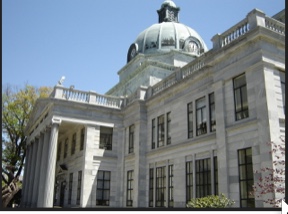Pennsylvania Marble, quarried less than thirty miles from the city of Philadelphia, was an important regional building stone in the first half of the 19th century. This marble was also known as Pennsylvania White Marble, Montgomery County Marble, King of Prussia Marble, and Henderson Marble.
Marble was found on the southern edge of Upper Merion Township. About half a mile from King of Prussia near the Chester Valley Railroad was the quarry formerly worked by J. Brooke from 1858 to 1876 and later by Derr & Adams and eventually by Schweyer & Leias. What was known as Henderson’s Quarry and later owned and worked by Daniel 0. Hitner was situated two miles southwest of Bridgeport and was worked before 1782. There was an extensive steam mill for sawing marble. These were the only marble quarries that had been worked in the township.
The appearance of King of Prussia Blue, combined with its reputedly fine quality and accessibility, made it a natural choice of Philadelphia architects. It was used primarily for monumental public building projects from 1790-1860, especially those designed in the Greek Revival style.
By the middle of the 19th century, however, the poor performance of the marble, the inability of the large grained stone to take detailed carving, changing design tastes, and improved transportation systems that increased the availability of white marbles from New England and Georgia all contributed to the demise of King of Prussia Blue Marble as a building stone.
Among the buildings constructed of King of Prussia blue marble were:
- The Second Bank of the United States
- Samuel Blodget’s First Bank of the United States, 1795–97
- John Haviland’s Franklin Institute (Atwater Kent Museum), 1825
- William Strickland’s Merchants’ Exchange, 1832–33
- Thomas U. Walter’s Founder’s Hall at Girard College, 1833–47
- Fort Mifflin
- Senate Reception Hall in the Capitol in Washington, D.C
- Montgomery County Courthouse in Norristown, built in 1854, and the addition to the courthouse built in 1902
- United States courthouse and post office in Williamsport
- United States post office in Reading
- Bomberger Memorial Hall on the Ursinus campus in Collegeville
- Chester High School in Chester
- Girl’s High School in Reading
- Central Grammar School in Chester
- Bryn Mawr High School in Bryn Mawr
- St. Patrick’s Parochial School in Norristown
- Allentown Hospital in Allentown
- St. Mark’s Reformed Church in Lebanon
- Calvary Baptist Church in Norristown
- St. Paul’s Reformed Church in Sellersville
- Grace United Evangelical Church in Reading
- German Reformed Church in Pennsburg
The marble was also commonly used in homes in Philadelphia and could be seen in the marble stoops in the city. Ronald Evitts, a New York architect, noted that fireplaces of King of Prussia marble could be found in many historic US homes. It had also been used for table tops, mantels, replace surrounds, and gravestones.
Before the end of the nineteenth century, the quarrying of marble in Upper Merion had ceased since the demand for the material had diminished.
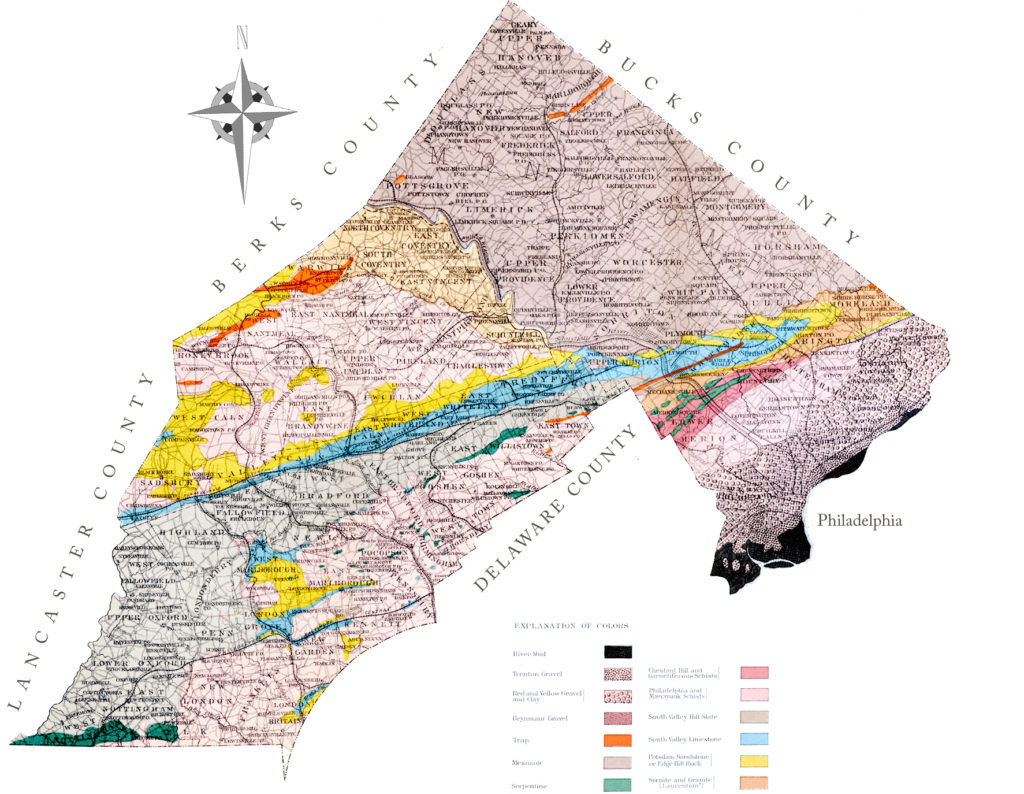
Pennsylvania Blue Marble, also known as Montgomery County Marble, King of Prussia Marble or Henderson Marble was quarried from veins within a limestone belt located in Upper Merion and Whitemarsh Townships, Montgomery County and in West Whiteland Township, Chester County, Pennsylvania. The light blue stripe running from east to west on this geological map of Montgomery and Chester Counties indicates the limestone vein in which the Pennsylvania Blue Marble would have been found. Source: University of PA Architectural Conservation Laboratory of the Graduate Program in Historic Preservation
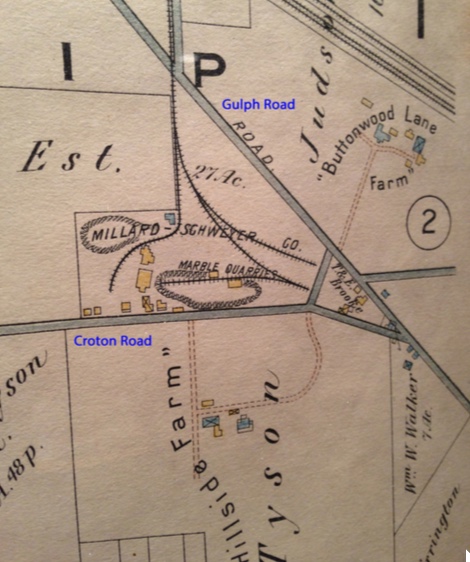
The Schweyer & Liess Quarry (later Millard & Schweyer), complete with railroad spurs from an atlas done by A.H. Mueller in 1912. (Courtesy of J. Michael Morrison.)
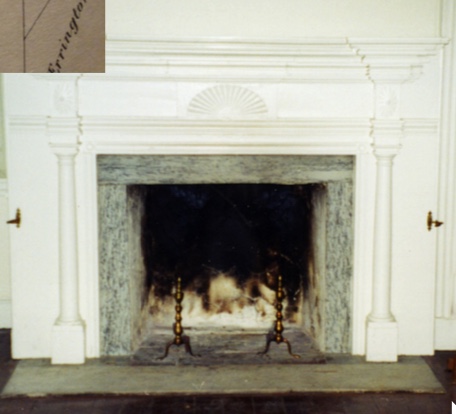
A King of Prussia marble surround adorns one of the many fireplaces of the historic Thomas Rees House on King of Prussia Road. (Courtesy of the King of Prussia Historical Society.)
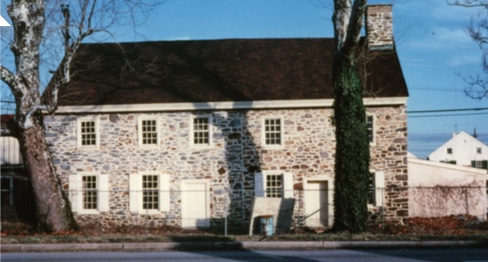
King of Prussia Inn is comprised of King of Prussia marble, mined from a quarry about a mile away. (Courtesy of the King of Prussia Historical Society.)

